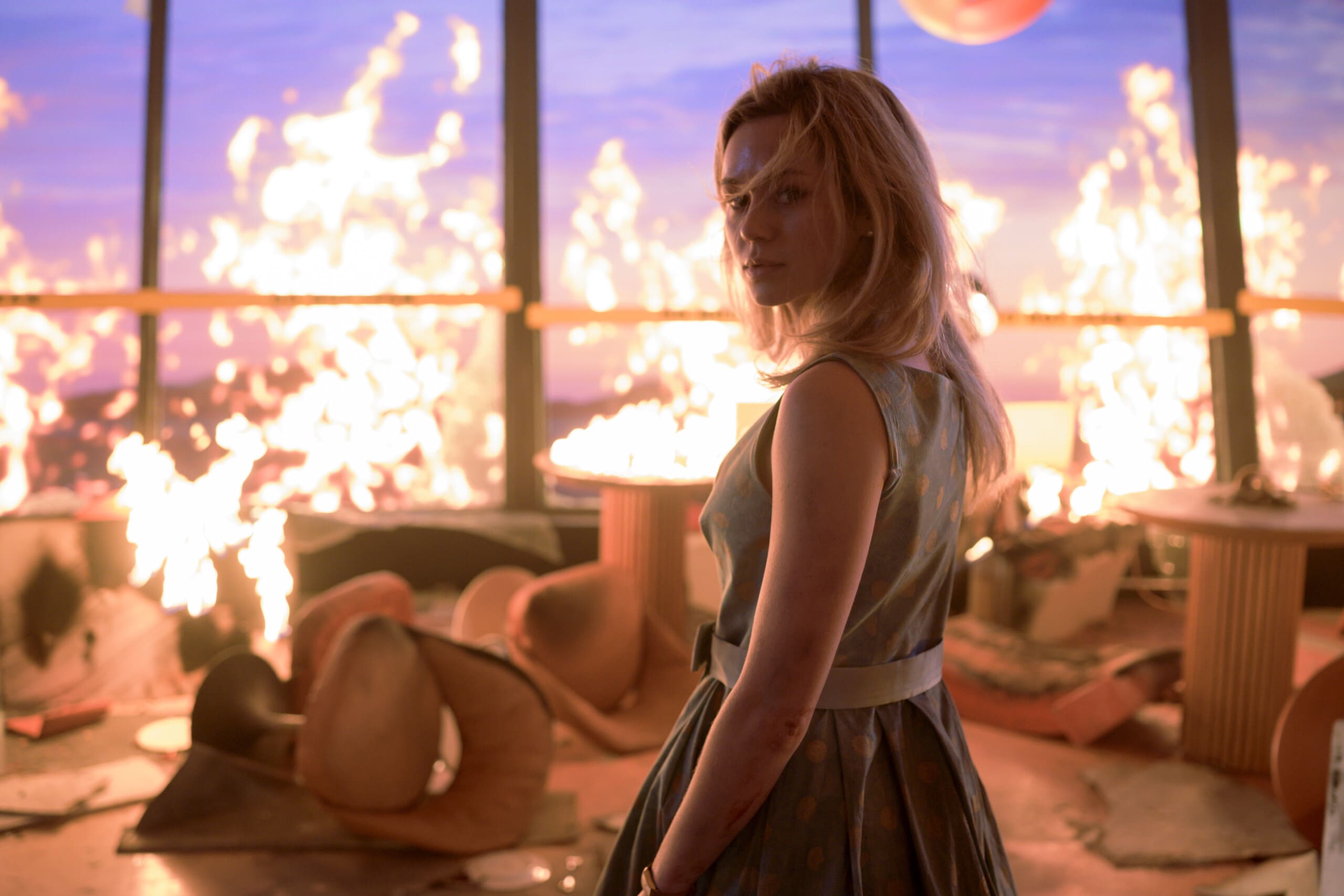
14 years. That’s how long it’s been since the last Final Destination film hit theaters. As other iconic horror franchises got their shot at a reboot, Final Destination laid dormant—and its turn is long overdue. After all, the elaborate nature of Death’s twisted imagination and crowd-pleasing fun are hard to find anywhere else. That’s why it’s so fulfilling to see the drought end as Final Destination: Bloodlines gives the franchise a welcomed return.
Instead of following a group of young friends, co-workers, or straight-up strangers, Bloodlines is a family affair. After receiving a premonition connected to her grandmother Iris (Gabrielle Rose/Brec Bassinger) preventing a tragedy when she was younger, Stefani (Kaitlyn Santa Juana) learns that her family is on Death’s hit list. While the change to focusing on a family seems like nothing major, it impacts the film quite a bit. The patience shown in developing the strained dynamics yet tight-knit feel of this family pays off greatly in creating meaningful stakes. When someone dies, it’s less about who Death’s eye is shifting to and more about these characters dealing with a genuine loss.
There also are some story threads surrounding generational trauma that are really intriguing. All the fears and paranoia that consume Iris trickle through Stefani and her mother Darlene (Rya Kihlstedt). Both find themselves anxiously looking over their shoulders for Death’s presence and have slowly distanced themselves in ways they don’t want to but struggle to avoid. It’s what gives these three such a compelling dynamic, and it’s equally as interesting to see their issues fuel tensions within the rest of the family. Stefani and her younger brother Charlie (Teo Briones) especially have good scenes that touch on their fraught relationship, and both Juana and Briones play into the undesired friction in their relationship.
The only problem is that this script doesn’t have the depth it needs to make the most of its family-centric narrative. Despite some good emotions and themes weaved throughout, most of these characters are fairly thin and forgettable. Stefani’s cousins are solely there to check boxes on a personality checklist, and mostly evoke the franchise’s trademark snark. There are some good scenes between brothers Bobby (Owen Patrick Joyner) and Erik (Richard Harmon) that reflect their juvenile yet caring bond. But overall, there’s nothing special about these characters, and the performances are definitely limited by the overreliance on dark humor and jokey dialogue. Unfortunately, the lackluster writing also leaks into the film’s handling of the lore and world-building.
At times, Bloodlines brings fresh ideas to the table when it comes to understanding Death’s design. There’s an interesting concept surrounding resurrection that stems from Final Destination 2. It’s well-utilized to create suspensful moments in the film’s second half, and hints at the possibility for a previous main character to return—something that hasn’t happened since the second film. The best element of Bloodlines, though, is undoubtedly how Tony Todd’s Bludworth is brought into the film. For the first time, we actually get more of a backstory on Bludworth and his connection to Death. It’s pretty rad, and it lets Todd deliver a can’t-miss final performance. It’s seriously the best of the film and will have horror fans in tears because he earnestly provides a moving monologue about life and death.
Aside from all that, though, most of the new, bloodline-focused concepts fall flat. There’s a scene of Stefani showcasing Death’s design through a cryptic family tree that’s visually cool, but problematic. It’s unclear if this scene ties into the larger franchise as a whole or is just meant for this story alone. If it’s meant to connect to every movie—which is possible since Iris’ journal has nods to the events of previous films—it creates huge lapses in logic that complicates existing lore. Plus, this film likes to introduce rules and exceptions it doesn’t always maintain. Erik is a big victim of this since his role in the family is so loosely defined that he creates unnecessary pitfalls in the story. From an unsatisfying twist to an unearned reversal, he creates a lot of issues when it comes to establishing clean rules for future films to follow. Not to mention, there are some characters who are labeled as safe and there’s nothing more unwanted than that in a Final Destination film—especially since the kills are superb.
Quite notoriously, directors Adam Stein and Zach Lipovsky were hired on for Bloodlines after they performed a death sequence on themselves during the interview. With that type of hiring story, the expectations for amazing deaths were at an all-time high. And thankfully, Stein and Lipovsky fully deliver the gory goods. The opening disaster might be the most epic of the series, as it tests your vertigo and showcases some amazing suspense-building. There’s some great lead-up to the insane carnage that ensues and the bloodshed is off-the-charts here. There are plenty of deaths that warrant a big reaction, and the creativity that Stein and Lipovsky show in crafting these intricate, often surprising deaths shows they were the right people to take the mantle. The only area where Bloodlines maybe falters in the kill department is the finale, since the deaths there feel forced and have that low-quality CGI that’s reminiscent of The Final Destination—that fourth film no fans want to be reminded of.
Final Destination: Bloodlines is by no means a flawless return for Final Destination, but it’s got enough fresh elements, jaw-dropping bloodshed, and crowd-pleasing antics to make fans thrilled to see the franchise return. At the very least, Bloodlines creates a solid foundation for the franchise to find new life and even wilder deaths.

